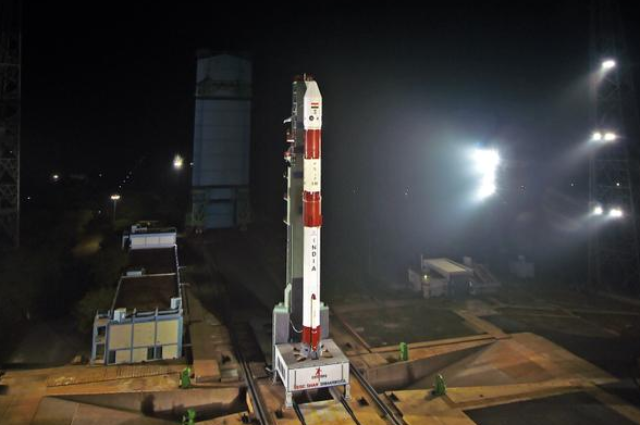Space has emerged as a crucial frontier in modern warfare with countries worldwide investing heavily in space-based defense systems. India has made significant strides in this domain by achieving technological milestones such as the development of Anti-Satellite (ASAT) capabilities. Addressing an audience in Bengaluru, Defence Minister Rajnath Singh emphasized India's progress in space defense by highlighting the nation’s ability to adapt and excel in cutting-edge space technologies.
The Growing Importance of Aerospace Medicine
During his visit to the Institute of Aerospace Medicine (IAM) of the Indian Air Force (IAF) in Bengaluru, Singh underscored the increasing relevance of aerospace medicine. As space exploration expands beyond government agencies, private players are also entering the sector by pushing the boundaries of innovation. However, this rapid advancement comes with its own set of challenges.
Singh pointed out that as more astronauts venture into space, it is imperative to ensure their well-being through specialized aerospace medical facilities. The unique physiological and psychological strains that space travellers endure require advanced medical research and infrastructure. Addressing these concerns will be essential to sustaining long-term space missions and commercial ventures beyond Earth.
The Rise of Space Tourism and Its Challenges
One of the most striking developments in the space industry is the rise of space tourism. Leading global corporations are now competing to make space travel a reality for civilians. As this sector grows, aerospace medicine will play a critical role in ensuring the safety of passengers venturing beyond our planet’s atmosphere. Singh highlighted that India must stay prepared to meet the demands of this evolving industry, both in terms of policy and medical advancements.
India’s Expanding Aviation Sector
Apart from space exploration, India’s aviation industry has been experiencing consistent growth. Since gaining independence, the nation has steadily developed its aviation infrastructure, fuelled by rising demand and strong government support. Over the past decade, these efforts have accelerated by positioning India as a dominant force in the global civil aviation sector.
With increasing investments in defense and commercial aviation, India continues to strengthen its aerospace capabilities. As space and aviation technology evolve, the country remains committed to staying at the forefront of these advancements by ensuring a robust and future-ready aerospace ecosystem.
India’s Aviation and Aerospace Sectors Reach New Heights
India’s aviation industry is experiencing an unprecedented boom by establishing itself as the fastest-growing aviation market globally. Defence Minister Rajnath Singh, speaking in Bengaluru had highlighted the country’s remarkable progress in this sector. He pointed out that India now ranks as the third-largest aviation market in the world’s domestic segment. Over the past decade, the number of aircraft operating in the country has doubled from 400 to over 800, while the number of airports has more than doubled by increasing from 74 to 159.
Expressing optimism about the future, Singh stated that India’s aviation sector is controlled for even greater growth. Apart from commercial flights, other aviation-related services—such as air ambulances and cargo transport—are also expanding rapidly, both within the country and globally.
The Increasing Role of Aerospace Medicine
With India's growing presence in space exploration, Singh stressed the growing importance of aerospace medicine. He explained that this field extends beyond treating illnesses in space—it plays a crucial role in understanding and managing the physical and psychological changes experienced by astronauts.
"The impact of space travel on the human body is significant. Extended periods away from Earth, separated from family and the comforts of home, present both physical and emotional challenges. In such situations, aerospace medicine is nothing less than a blessing," he remarked.
India’s Advances in Indigenous Aircraft Development
India is not just making strides in aviation and space exploration but is also achieving self-sufficiency in defense manufacturing. The Institute of Aerospace Medicine (IAM) has played a key role in the design and development of several advanced aircraft, including the Advanced Light Helicopter, Light Utility Helicopter, Light Combat Helicopter, and the Tejas Light Combat Aircraft.
Singh expressed pride in IAM’s contributions, particularly in its advisory role in developing the country’s Advanced Medium Combat Aircraft (AMCA). This Indigenous fighter jet project is a critical step towards achieving self-reliance in defense manufacturing, aligning with India's broader vision of technological independence.
India’s Commitment to Aerospace Excellence
With continued advancements in aviation, space exploration, and aerospace medicine, India is rapidly solidifying its position as a global leader in these fields. The government’s commitment to innovation and self-reliance ensures that the country remains at the forefront of technological progress. As the demand for air travel, cargo services, and space missions increases, India is well-prepared to navigate the future with confidence and expertise.
India’s space sector has steadily evolved into a powerhouse of technological advancements, showcasing its ability to achieve remarkable milestones with strategic significance. The country has made significant progress in satellite technology, launching communication, navigation, and earth observation satellites while also embarking on ambitious interplanetary missions. Notably, the Mars Orbiter Mission (Mangalyaan) demonstrated India's expertise in cost-effective and reliable space exploration, making the Indian Space Research Organisation (ISRO) the first in Asia and the fourth in the world to accomplish such a feat.
Chandrayaan-3: A Game-Changer for Global Partnerships
The recent success of Chandrayaan-3, which achieved a soft landing on the Moon’s South Pole, has positioned India at the forefront of lunar exploration. This achievement has not only elevated India’s stature in space research but has also opened doors for international collaborations and the commercialization of space technologies. The nation has established partnerships with space agencies from countries such as the United States, the United Kingdom, Singapore, and Germany, among others.
India’s ability to offer cost-effective satellite launch services has been a key driver of its global appeal. So far, India has launched 429 foreign satellites, generating a revenue of $174 million. The country continues to expand its indigenous satellite fleet, including the Indian Regional Navigation Satellite System (IRNSS) for navigation and the GSAT series for communication, further solidifying its role as a major player in the space sector.
. . .
References:

